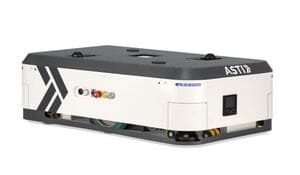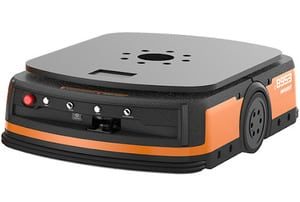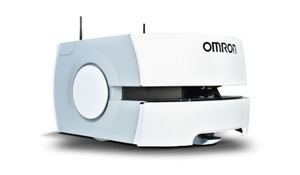AMR robots are becoming the backbone of the internal logistics of Industry 4.0 warehouses and plants. The automation of processes requires the optimization of resources, including that of human personnel, and mobile robots are emerging as the total solution with which to improve the competitiveness of your company.
In the following article you will be able to know the different types of AMR robots that exist as well as brands, manufacturers and companies that integrate autonomous mobile robots.
WHAT IS AN AMR ROBOT?
By definition, an AMR robot is an autonomous mobile robot (Autonomous Mobile Robots) that has been developed to automate the transport of material from a collection point to a delivery point. Its objective is to increase the productivity of the company by delegating routine and repetitive jobs that do not add productive value to them.
AMR robots differ mainly from AGV robots by being more flexible, cheaper and faster to install.
WHEN TO BUY AN AMR OR AGV ROBOT?
Despite the fact that AMRs use more advanced technology than AGVs, whether due to software or computer hardware, it is estimated that integrating AMR applications can be around 40% cheaper than AGVs. If you still doubt whether buying these robots will be profitable for your company, manufacturers and integrating companies ensure a return on investment (ROI) that can vary between 4 and 6 months (it varies depending on the needs required by the project).
If you want to integrate an AMR or AGV robot into an automated process, we recommend that you trust the professionals of robotics companies who know well the characteristics and capabilities of each application.
AMR ROBOT BRAND LIST
Here are some of the world’s leading manufacturers of AMR robots for automated material transport:
OTTO MOTORS
Canadian company, a division of Clearpath Robotics Inc. OTTO Motors provides autonomous mobile robots for material handling within manufacturing facilities and warehouses. The vehicles operate with navigation without infrastructure, offering intelligent, safe, efficient and reliable transportation within industrial centers. Proprietary hardware, software, and services are delivered to deliver customer excellence.

MIR
(Mobile Industrial Robots) is a global manufacturer based in the Danish city of Odense founded in 2013. It develops advanced applications for the distribution of goods using AMR robots that combine robotics and artificial intelligence. Its warehouse solutions have become a benchmark in the sector.

ASTI Robotics
Robotics company from Burgos that has managed to gain a foothold among the most powerful international companies in the logistics sector and become the largest distributor of mobile robotics in Europe. At the head of ASTI is Verónica Pascual Boe, who has managed to lead a project that currently offers a wide variety of intelligent mobile robots, both for industrial uses and for social robotics.

Hikrobot
Hikrobot is a logistics solutions provider with a wide catalog of autonomous mobile robots designed for the transport of materials and racks. Thanks to the Goods-to-Persons solution, the order picking process in your distribution center can be much more efficient and productive.

Omron
Omron is a storied Japanese technology company with a little less than a century of history. He has specialized in developing applications for industrial robotics, from Scara robots to mobile warehouse robots. They are a benchmark in the sector given their reliability and the advanced technology they incorporate. Fleet Simulator, a fleet control simulator for AMRs capable of predicting the behavior of devices, has recently just been released.

TYPES OF ROBOT AMR
AMR robots can vary in their composition depending on the purpose of their use. That is why there are different models that can incorporate or have the form of:
- Mobile platform for transporting racks and containers
- E-commerce package transport support with built-in conveyor belt
- With cargo containers
- Palletizer for transporting pallets and cages
- Forklift
There are AMR models that move on rails placed in more complex structures on upper floors of the warehouse. They are used mainly for the distribution of goods destined for ecommerce.
If we look at the AMR system offered by Locus Robotics, we can see that it is a collaborative robot that interacts with operators in the process of collecting and delivering packages. Other models have automated elements to collect and unload the material.
CHARACTERISTICS OF A STAND-ALONE MOBILE ROBOT
Like AGV vehicles, AMR robots allow operators to focus on value-added operations, delegating repetitive, tedious and stressful tasks to robots. They stand out for being very quick to configure and integrate in a workplace or factory. They are especially valuable for the delivery of materials and goods at dynamic collection points, such as e-commerce centers, although they can also be used in autonomous picking jobs, and packing and palletizing stations.
ADVANTAGES OF AN AMR VS AGV FOR INTERNAL TRANSPORTATION
- Allows flexibility in navigation
- Select smart routes for the delivery of goods
- They work in environments surrounded by humans, objects, and other robots
- Eliminate bottlenecks in distribution centers
- Can be controlled by software in real time
- They allow the prioritization of deliveries
- They are especially useful for logistics centers for ecommerce
- Faster and less expensive implementation
- Reduce installation time and eliminate downtime when integrating
- Easily adapt to different product formats
- In case of production changes, they allow a quick, simple and very economical programming readjustment
- The use of AMRs can reduce warehouse space by up to 30%
- Obtaining data with greater precision from industrial and commercial processes
- Improve the efficiency of intralogistics
- They allow operators to dedicate themselves to jobs that add more value to the process
- They optimize productions and improve the competitiveness of companies
HOW DOES AN AMR ROBOT WORK?
AMR robots incorporate cameras, anti-collision sensors and laser scanners that allow them to detect their surroundings. A fleet control software is in charge of controlling the devices and selecting the most efficient routes for the robots to carry out the transport of material. This software is controlled by artificial intelligence, which allows you to make decisions based on the experience of the results. Some AMR models use simultaneous mapping or swarm intelligence, that is, they exchange data between devices to optimize navigation routes.
If, before reaching their destination, they encounter any object, be it a forklift, car, any type of machine or person, it detects it and performs a maneuver to avoid them and continue through an alternative route. It is what is defined as intelligent navigation. It must be emphasized that the AMRs are just as safe as the AGVs, they simply differ from each other because unlike the AMRs, the AGV does not continue its march until its route has been cleared.
An AMR robot can be given a shipping priority, so it is the software that is in charge of checking the position and availability of the closest robot to prioritize the shipment of either a package, box or any standardized material.
Some AMR robot models are even capable of following an operator to make a delivery at a specific point.
Depending on the provider, you have fleet control software in which each one has different capacities and particularities. Amazon is currently developing software with which it intends to control a fleet of up to 1000 robots at the same time.
DIFFERENCES BETWEEN AN AMR AND AN AGV FOR THE TRANSPORT OF MATERIAL
AGV robots are Automatic Guided Vehicles that for decades have been in charge of automating the transport of materials in factories, warehouses and work centers. They carry out the shipment of goods or parts through fixed, standardized and highly repetitive routes. We must emphasize that for these processes, AGVs continue to be just as useful as AMRs, as happens in the supply of lines in the automotive sector.
However today, the production needs of Industry 4.0 sometimes require smart solutions that are more flexible and dynamic. While AGVs respond to the commands of simple programs and are very limited in their movements, AMRs incorporate more sophisticated technology that allows them through natural navigation to be able to make intelligent decisions and act according to needs in real time.
To install a fleet of AGV or LGV robots (Laser Guided Vehicles) an expensive hardware installation is necessary in the facilities, since they need to incorporate magnetic strips, cable guidance and sensors on the ground (depending on the navigation system). the floor or walls. It also requires a work that prevents production from being kept running while the installation is being carried out. These works and production stops are no longer necessary with the implementation of the technology offered by AMR robots. They simply require software where virtual maps similar to those of the GPS are created where the routes and the locations of loading and delivery of material are loaded.
Fuente: Revista de Robots